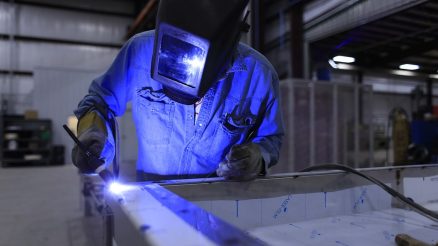Equipment can be expensive to purchase, and repairs can be even more costly. This is why regular preventative maintenance is very important. Proper care and preventative maintenance can help you avoid sudden unwanted repairs and equipment failure down the road, while also extending the life expectancy of your equipment. Here are four helpful steps you can take to extend your equipment’s life expectancy.
Regular Maintenance
Establishing a machine inspection schedule that you can adhere to will help you stay on track with performing regular preventative maintenance on your equipment. You can create a time-based trigger, or a usage-based trigger. The trigger is basically a scheduled reminder that is set to go off after a certain timeframe or usage is reached. Scheduling a timeframe to change an air conditioner filter is good example of a time-based trigger. Usage-based triggers, on the other hand, will need to go off when the equipment has reached a certain output – such as hours of production on any give piece of equipment. Remember to document what you find upon each inspection, whether it be a simple filter change or something more labor intensive like a motor rebuild.
Temperature Control
Infrared temperature controllers allow you to test the temperature of your equipment using a non-contract measuring tool. These controllers allow you to detect defects in motors, fuses, and other electrical connections by means of a thermal imager. Hand-held infrared temperature controllers are designed to measure temperatures ranging from approximately 50°C to 2000°C (122°F to 3632°F). It helps you to check critical components of your equipment quickly and easily, making sure the parts are working properly and not overheating while in use.
Lubrication of Machine Parts
One of the most important things you can do to extend the life of your equipment is to make sure it is properly lubricated. When your equipment is in use it creates friction. That friction can cause corrosion, metal-to-metal contact, and uneven wear on parts. Naturally, this can lead to equipment failure. Milling machine coolant works to lubricate these parts, as well as cool them while in use. The cooling effect from the lubricant is necessary in removing heat from the tool and preventing it from exceeding its safe temperature range. The most common types of machine coolants on the market are categorized as cutting oils and water-soluble coolants. The OEM (original equipment manufacturer) recommendation will tell you what type of oil is needed for your equipment.
Your equipment is an investment, so make sure to treat it as such. Give it the TLC that it needs now so that it will continue to work for you for many years to come. Simple preventative maintenance now can lead to avoiding unwanted costly repairs down the road.
Addy Reeds is a freelance writer from Eugene, Oregon. She discovered her passion for journalism while attending the University of Oregon. Follow her on Twitter and Facebook: @addyreeds1; https://www.facebook.com/addy.reeds



